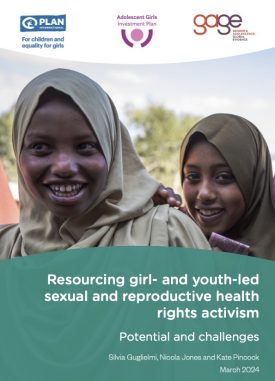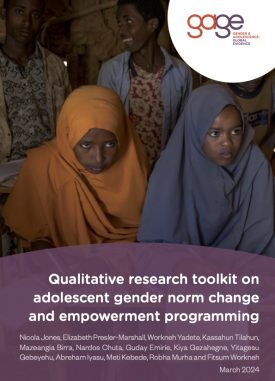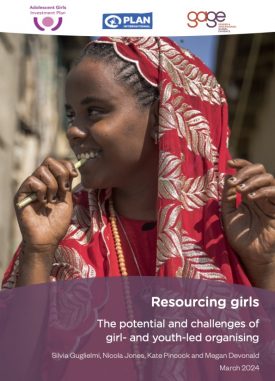Produced as a resource to inform GAGE programming and to be used by researchers, programme designers and policy makers, this rapid country evidence review brings together key evidence from over 220 thematic studies on Rwandan adolescent girls (aged 10-19). As a living document to be updated as necessary, it lays out what is known —and identifies what is not known — about girls’ capability development as delineated by the six domains of the GAGE conceptual framework: education and learning; bodily autonomy, integrity and freedom from violence; sexual and reproductive health, health and nutrition; psychosocial wellbeing, voice and agency, and economic empowerment.
Our mapping found that the evidence on Rwandan girls’ capabilities is broad, albeit especially focused on particular topics, namely education and sexual and reproductive health. It also found that younger adolescent girls have been largely ignored in favour of their slightly older peers and that older girls are most often considered within the larger category of “youth.”
Rwandan girls’ have made significant, though uneven, progress in recent years. For example, they are now more likely than boys to attend school — even at the secondary level. On the other hand, their performance continues to lag in part because they are responsible for the lion’s share of household chores. Similarly, while child marriage is uncommon in Rwanda, adolescent girls are highly vulnerable to sexual violence and are increasingly engaged in exploitive relationships with older “Sugar Daddies.” Moreover, most adolescent girls in Rwanda do not use any contraception, while Rwanda is among the few countries in the region where adolescent pregnancy rates are increasing.
Suggested citation
Stavropoulou, M. and Gupta-Archer, N. (2017) Adolescent girls’ capabilities in Rwanda: the state of the evidence. London: Gender and Adolescence: Global Evidence. (https://www.gage.odi.org/publication/adolescent-girls-capabilities-rwanda-state-evidence/)


